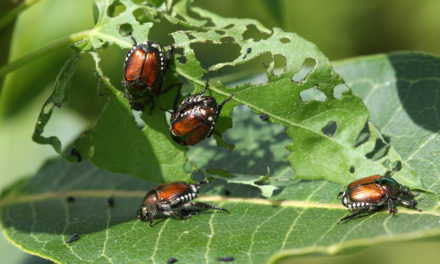Crop Spraying Part 2
A call came in at 6 am. The AG dealer who had been contracted to spray the field to the north of my new homestead had lost my number. He called my neighbor for my contact information that morning, and the race was on for me to drive over to my land to quickly cover my tender plants before the farmers could continue their work. The refill truck was also waiting at the top of the road. So, I am holding up not just one, but two workers that are sitting on their hand waiting for the crazy “organic” lady to cover her garden!
I can move fast when warranted, and I had all the tarps and covers in one locations, which made it easier to cover what I could quickly. The wind was blowing out of the north, so it was going to overspray at least Jim’s cherry bushes and grasses. I asked the manager what he was spraying. It was a cocktail of several herbicides, but none of the deadly floating Dicamba!

I ran out of covers long before I ran out of plants, but time is money and I didn’t want to delay the workers any longer. I was beyond delighted that I had found such favor with not only my neighbors, but the men from Okawville, Illinois! I waved at the spray rig to start and off they went.
I called the manager and thanked him again for the courtesy he had extended me. I think it says so much about the caliber of men I am dealing with, that both my neighboring farmers and the AG manager were willing to work with me, rather than just nuke my expensive plants. I am blessed!
The good news is that more applicators of farm chemicals are becoming aware of the necessity of working with the beekeepers and the local organic and all-natural farmers

Mike and Carol Brabo, owners of Vesterbrook Farms in Clarksville, Missouri, served over 150 members of their community-supported agriculture (CSA) programs, providing organic fruits and vegetables and honey. All that ended when a conventional farmer sprayed his soybean field with the herbicides glufosinate, clethodim and metolachlor. With that one application, the Brabo’s farm sustained over $300,000 in damages, including a $12,000 loss of over half of the farm’s bees. The organic family farm faces ruin since they cannot apply for organic recertification for three years. They may lose their farm over just one application of weed killer in fields over which they had no control.
What can we do? There is a new database called Driftwatch where organic and all-natural farmers can register their property. It is a communication tool that allows pesticide applicators and farmers to work together to protect speciality crops using mapping programs. While it is non-binding, it is an excellent resource for both farmers and chemical sprayers to be alerted to the existence of organic sites in their area. The fact that Driftwatch and Fieldwatch and beekeeper sites exist is a step in the right direction.
My experience with AG an my neighbors gave me renewed hope that it is possible to work with pesticide companies. I love my homestead, but most farmers also care for their land and farms too. I am hopeful.
Be blessed!
Ann May.






